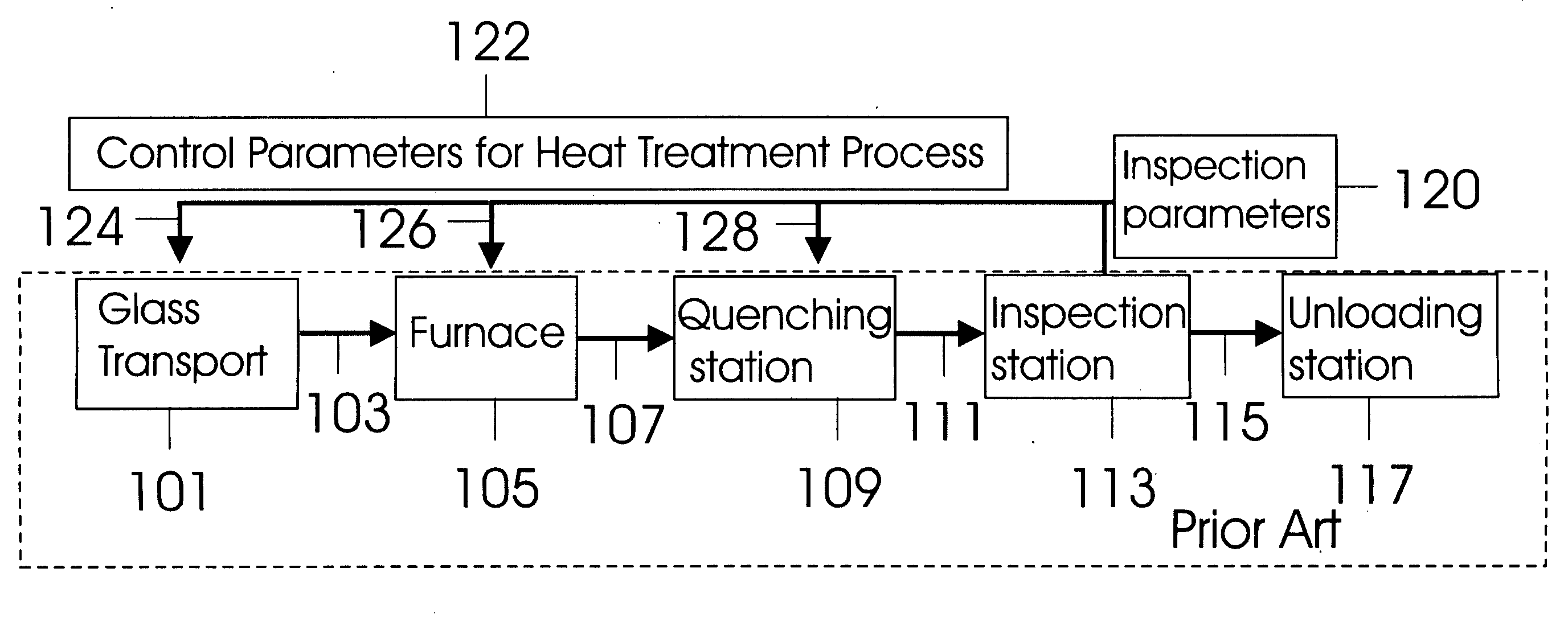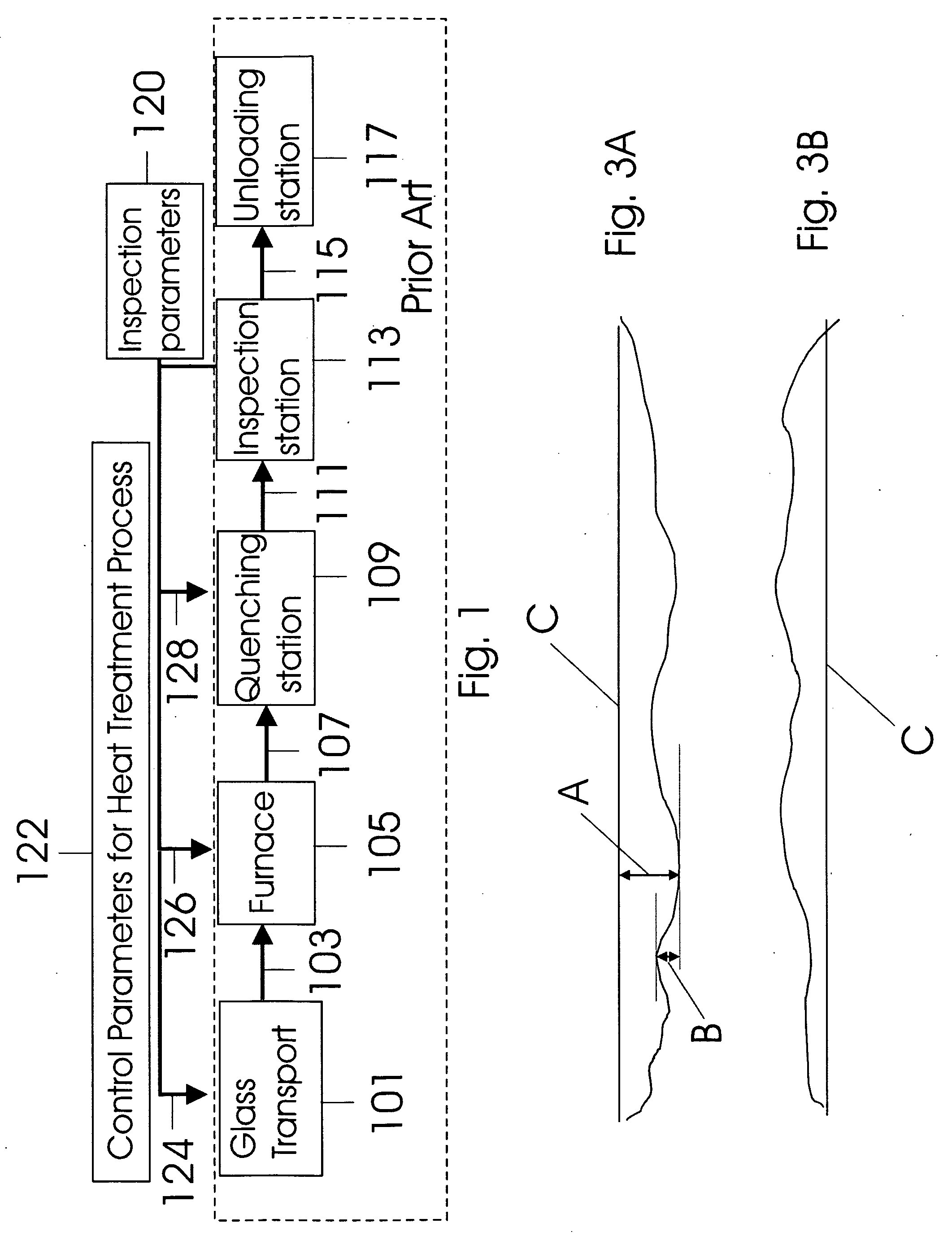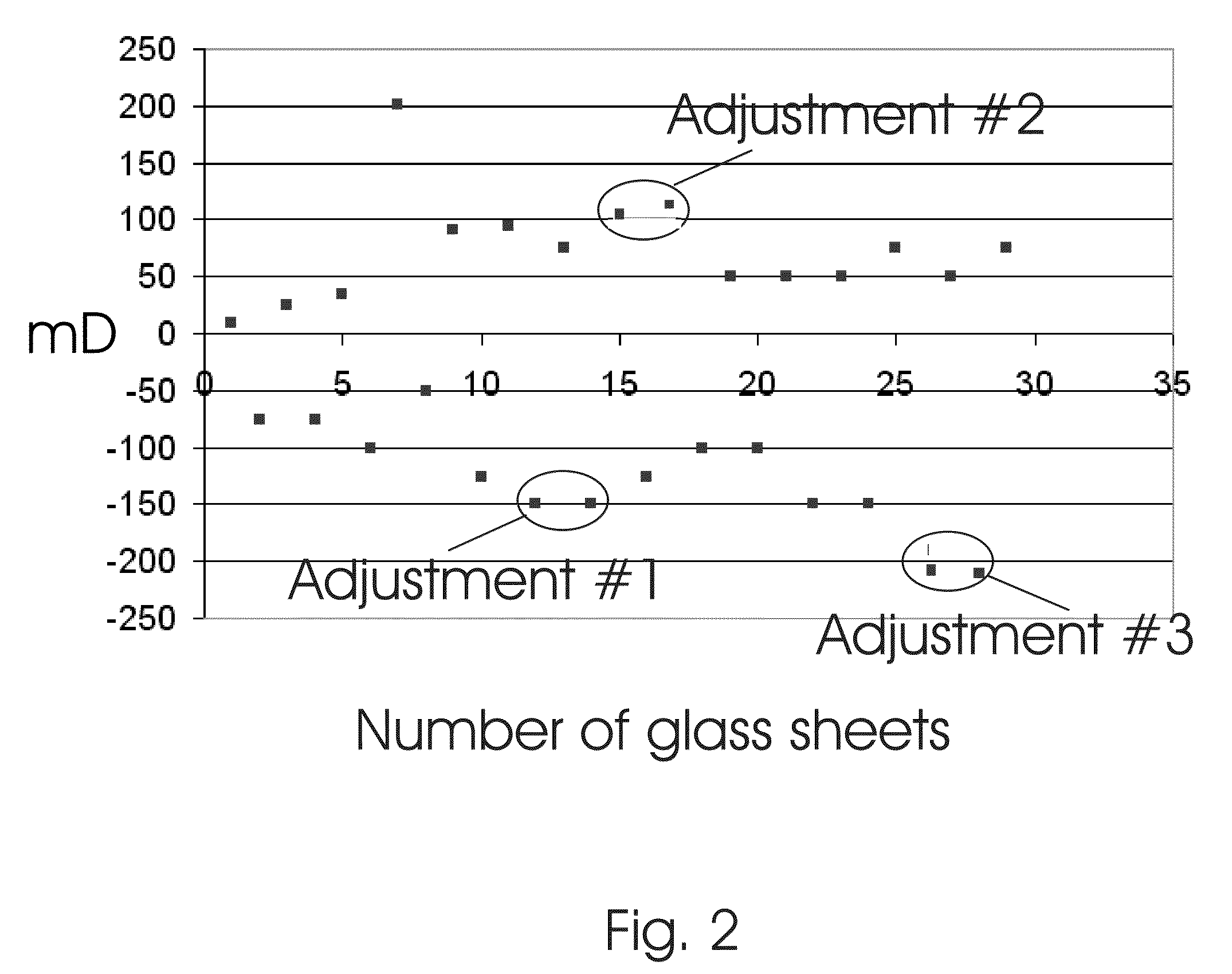Closed loop control system for the heat-treatment of glass
a control system and glass technology, applied in glass tempering apparatuses, instruments, manufacturing tools, etc., can solve the problems of glass sheet deformation, line velocity may be decreased, etc., to reduce scrap, increase yield, and reduce labor, energy and material costs.
- Summary
- Abstract
- Description
- Claims
- Application Information
AI Technical Summary
Benefits of technology
Problems solved by technology
Method used
Image
Examples
specific embodiments
[0042]FIG. 1 illustrates the control system 10 of the present invention. A glass transport 101 transports a glass sheet 12 into a furnace 105. The furnace 105 heats the glass sheet 107. The glass transport 101 transports the glass sheet 12 into the quenching station 109. The glass sheet 12 is quenched 111 at the quenching station 109. The glass transport 101 transports the glass sheet 12 past the inspection station 113. Inspection parameters 120 are measured at the inspection station 113. Inspection parameters 120 are used to determine control parameters for the heat treatment process 122. The control parameters for the heat treatment process 122 include a transport setting 124 for glass transport 101, a furnace setting 126 for heating in the furnace 105 and a quench setting 128 for quenching at the quenching station 109. Any or all of the transport setting 124 for glass transport 101, the furnace setting 126 for heating in the furnace 105 and the quench setting 128 for quenching at...
PUM
| Property | Measurement | Unit |
|---|---|---|
| Speed | aaaaa | aaaaa |
| Speed | aaaaa | aaaaa |
| Power | aaaaa | aaaaa |
Abstract
Description
Claims
Application Information
 Login to View More
Login to View More - R&D
- Intellectual Property
- Life Sciences
- Materials
- Tech Scout
- Unparalleled Data Quality
- Higher Quality Content
- 60% Fewer Hallucinations
Browse by: Latest US Patents, China's latest patents, Technical Efficacy Thesaurus, Application Domain, Technology Topic, Popular Technical Reports.
© 2025 PatSnap. All rights reserved.Legal|Privacy policy|Modern Slavery Act Transparency Statement|Sitemap|About US| Contact US: help@patsnap.com



